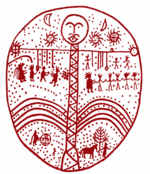Similar topics
"The Egyptologist, the Sphinx and the cover-up" -
Page 1 of 1
 "The Egyptologist, the Sphinx and the cover-up" -
"The Egyptologist, the Sphinx and the cover-up" -
See Philip Coppens for more:
The Egyptologist, the Sphinx and the cover-up
Ten years ago, three books—Giza: The Truth (by Chris Ogilvie-Herald and Ian Lawton), The Stargate Conspiracy (by Lynn Picknett and Clive Prince) and Secret Chamber (by Robert Bauval)—provided an overview of the controversy that was believed to surround the Giza Plateau and the pyramids. The key question was whether it held any undiscovered, or purposefully kept hidden, chambers, whether inside the pyramids or under or near the Sphinx.
The previous decade had seen a renewed interest in the plateau, partly due to the theories of Robert Bauval and Graham Hancock and the discovery of a door in an inaccessible part of the Great Pyramid. It was found on 22 March 1993 by German robotics engineer Rudolf Gantenbrink during the installation of an air conditioning system. The discovery resulted in several claims, allegations and diatribes which, with the dawn of the new millennium, slowly disappeared.
Today, interest in the mysteries of ancient Egypt seems to have waned and peace seems to have been restored. But speak to people in the field and on the ground, and a different picture emerges. It is one of widespread condemnation of the Supreme Council of Antiquities (SCA) and specifically of Dr Zahi Hawass, who has been its Secretary General since 2002. Remarkably, many Egyptian archaeologists argue that the organisation rules with dictatorial control, and that this is but the tip of an iceberg of coverups, slander, embezzlement and perhaps more. Ten years on, no one seems to be writing about it but the situation is at least as bad as back in 1999.
The Supreme Council of Antiquities is part of the Egyptian Ministry of Culture and is responsible for the conservation, protection and regulation of all antiquities and archaeological excavations in Egypt. Over the past decade, a television viewer might be forgiven for believing that there is only one Egyptologist, and that man is Hawass. In truth, Hawass is more of an administrator than an archaeologist; one might even argue that if the man had enough time to lead excavations, he would not be fulfilling his task as administrator. But a television camera has the same attraction as light to a moth. Hawass is a controversial figure. He was at the centre of contention in the 1990s, and remains so today—now, more so in Egypt than abroad.
In the 1990s, Hugh Lynn Cayce reportedly said, according to Edgar Cayce biographer A. Robert Smith: "I got him [Zahi Hawass] a scholarship at the University of Pennsylvania in Egyptology, to get his PhD. I got the scholarship through an ARE person who happened to be on the Fulbright scholarship board."1 Hawass strongly denies this, though it is a fact that he was admitted to the University of Pennsylvania through this scholarship. (Note: ARE is the Association for Research and Enlightenment, an organisation set up to promote the work of the American "sleeping prophet" Edgar Cayce.)
The ARE is interested in the Giza Plateau because, in the 1920s, Edgar Cayce proclaimed that a "Hall of Records", containing information about the lost civilisation of Atlantis, was hidden underneath the Giza Plateau near the Sphinx.

ankh_f_n_khonsu- Number of posts : 545
Registration date : 2008-09-15
 Similar topics
Similar topics» "Torah" & "Nomos"
» "Review: 'Frances Yates and the Hermetic Tradition', by Marjorie G Jones" -
» "Dr. Steven Greer presents 'Contact & Disclosure: The Final Sequence'" -
» "Review: 'Frances Yates and the Hermetic Tradition', by Marjorie G Jones" -
» "Dr. Steven Greer presents 'Contact & Disclosure: The Final Sequence'" -
Page 1 of 1
Permissions in this forum:
You cannot reply to topics in this forum
